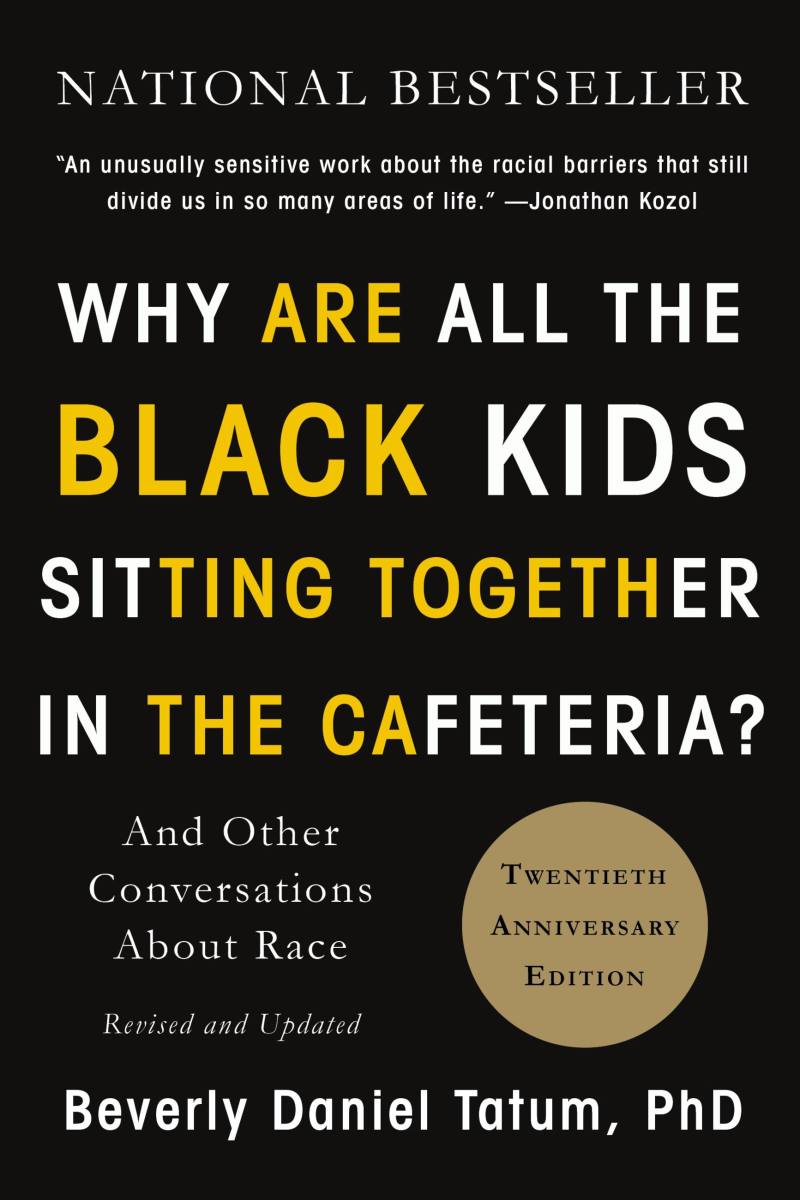What Is Race? - Anthropology

Introduction
Race was originally believed to be a definitive term that could define everyone. Even to the extent that anthropologists once used a typological model in order to divide people into their racial type. This model assumed that observable morphological traits could be used in order to assign people to their race. However, today this has been widely discredited... at least scientifically. Despite this societies do continue to use race as a means of defining and separating people even though there is no demonstrable basis for race. Anthropology has, for decades, most commonly regarded race as a social construct; a folk taxonomy which differs in each culture. Most anthropological studies into race have began from this standpoint and viewed race only as a societies means of defining people. Recently though there has been a return to the idea that race is scientifically valid in the biological discovery of ‘racial’ differences in genomics. This revives the question of how to define race and to what extent, if any, it can be regarded as having a valid scientific base.
Race as Appearance?
The concept of race is generally based on differences in appearance but even in this race fails to correspond to actuality as “what is now know about human physical variation does not correspond to what Americans think of as race” (J. Fish 1995: 58). This applies equally to other cultures with similar racial definitive’s. Further evidence to race not being biological is the vast differences in classifications of racial categories throughout the world. If there were any scientifically viable differences between groups of humans then these racial groupings should surely be somewhat universally accepted; “all that exists is variability in what people look like - and the arbitrary and culturally specific ways different societies classify that variability. There is nothing left over that can be called race” Fish (1995: 57). Each culture has it’s own basis for racial categories because, it is claimed, race is fundamentally based on cultural beliefs and views about others which do not apply worldwide. Race seems to be just as culturally enclosed as any symbol or ritual and should be treated as such. Race is a fairly recent concept to human societies but has had a profound effect since it’s appearance. When “race” appeared in human history, it brought about a subtle but powerful transformation in the world’s perceptions of human differences. It imposed social meanings on the physical variations among human groups that served as the basis for the structuring of the total society. (Smedley 1998: 693)

Race as Self-Identity
Since the emergence of race people, especially those in the western world, have associated peoples physical features with their identity. People have been socialized to give hereditary qualities a level of social meaning they do not naturally have. The effect of race on identity though has had varying degrees of authority over a persons self-identity; ‘Americans were compelled to the view that a racial status, symbolised by biophysical attributes, was the premier determinant of their identity’ (Smedley 1998: 693). Today it seems that most have overcome this prejudicial belief but it still has limiting effects on some people’s social identity. Despite race appearing to have no definitive biological basis it still has an effect on societies and individuals interactions within them. The persistence of race to exist within societies, despite it’s being viewed as a scientifically invalid term, means that anthropologists should continue to study race but also remain aware that race should not be regarded by them as ‘real’.

Race = Racism
Simply because we accept that race does not biologically exist does not mean that we can ‘afford to be blinded to, intellectually confused about, or afraid to address the malleable and persistent realities of racism’ (Harrison 1998: 613). Racial groupings can have a large affect on social interaction of individuals within a society as there can be a hierarchy and prejudice regarding race. Often people who move from one culture to another with different terms of race can find it difficult to adjust. For example, when immigrating to America ‘Brazilians, Haitians, and others may find themselves labelled by strange, apparently inappropriate, even pejorative terms’ (Fish 1995: 80). Many can begin to feel as though they have come to have a lower social status due solely to their racial identity. Within societies race and ethnicity have often been confused by many and are commonly regarded as having a shared meaning. However, ethnicity refers to a persons individual identity whereas race is the identity of a group of peoples usually based on hereditary features and physical appearance. The ancient world seems to have understood that a persons identity could change through moving and becoming part of a new culture; ‘ethnic identity itself was fluid and malleable’(Smedley 1998: 691). Race however is a more definitive term, to a degree; in a single culture race cannot be as fluid as ethnicity but if regarding the entirety of the worlds cultures racial categories vary greatly. This confusion between race and ethnicity means that people often regarded different races as having qualities beyond that just of race. Those of different races are regarded by many as having an assigned religion, socioeconomic class, values, beliefs, morals and other identifying characteristics. ‘The dilemma for the low-status races was, and still is, how to construct a positive identity for themselves in the light of the “racial” identity imposed on them by the dominant society” (Smedley 1998: 695). Racial categorising within societies therefore leads to a racism which people struggle to escape. Expectations and assumptions are made about people based simply on their appearance and physical features. Hierarchies of race are created by most societies with racial groupings and it is this pecking order which causes undue social harm to individuals. ‘Conventional analyses of ethnicity have not explained how or why racism exists and persists, and why, under certain conditions, categories of human beings are subjugated or privileged because of differences purported to be fundamentally natural and/or biophysical’ (Harrison 1998: 613). Views of race have such an adverse effect on many individuals despite having no universal basis or biological authenticity. Race only acts to categorise people without looking deeper into their lives than their physical appearance. Race alone cannot define any person especially when the fluidity of racial definitions worldwide is account for.

Race - A Scientific Concept?
Recently biologists have began to express ‘disquiet about the proposition that race is a social construct’ (Banton 2005: 3). This is due to research into the human genome which appears to have found medical implications associated with race. Armand Marie Leroi maintained that ‘the consensus about social constructs is unravelling […] genetic data show that races clearly do exist’ (cited in Banton 2005: 3). One problem with claiming that race is biological is that any genetic variations amongst populations have only recently developed. This means that these variations have not had enough time to develop into truly racial differences to the extent that certain human characteristics belong solely to one race or subspecies. Templeton argued that ‘the quantitative levels of genetic diversity among human populations do not rule out the possibility that human “races” are valid under the evolutionary lineage definition of subspecies’(1998: 635). Templeton continues to explain the two predominant models of race; the candelabra and the trellis models. These two models produce very different results as ‘human “races” as evolutionary lineages do exist under the candelabra models but do not exist under the trellis model’ (Templeton 1998: 636). The problem with claiming race as biological is therefore that it cannot be conclusively proved as there is always another possible theory which does not agree. ‘The error of modern theories is due largely to a faulty extension of the concept of individual heredity to that of racial heredity. Heredity acts only in lines of decent.’(Wade 2005:20). Cartmill claims;
Some genetic variant that produce physical or behavioural deficits occur significantly more often in some areas, or in some ethnic groups, than in other. However, none of these facts provides any intellectual support for the race concept, for racial classifications, or for social hierarchies based on ethnic- group membership. (1998: 651)
It still seems that the idea of race as having biological truth is rejected by most and that it remains as having only a small possibility of truth which would need much more evidence in order to be regarded as scientifically reliable. ‘Most evolutionary biologists reject the notion that there are special “racial” traits’ (Templeton 1998: 632). Even if found to have a scientific basis, race would need to be redefined as the biological realities would certainly not be reflected in the social constructs that are currently in force. Social race and biological race would not line up. The social hierarchy and assumptions based on race would remain unfounded and if represented in society would be the result of self-fulfilling prophecy rather than any biological grounding.
Conclusion
Race is still regarded as a social construct and should remain so until further, more persuasive, evidence can be found in support of the idea of biological racial types. Genomics at the moment fails to prove conclusively that race has any level of validity. Any differences found between the biology of ‘races’ does not apply to every member of that particular race and it is only the case that certain features are prone to appear within those groups but are not usually limited to that race. These differences came about due to geographical differences and humans adapting to these, they are by no means a justification of the influence that the social concepts of race have in stereotyping people. Any of the findings regarding racial differences seem only to be applicable to medicine e.g. odds of having a certain disease may result from ancestors environments where that was either beneficial or non-harmful thus it would be worth being aware that this disease should possible be looked out for. This does not vary from individual family groups being say more prone to heart disease than most - it most certainly has no social basis in who individuals are determined to be. It seems that all findings about racial differences have very little practical uses and cannot prove that the social racial categories have valid scientific groundings. The social constructs of race are not supported by biological findings. Race therefore seems to still be in question but all biological findings fail to act as valid evidence of race’s true existence and even if it did it would not be racial categories as we know them - physical traits we can see would not be the basis of biological race.








